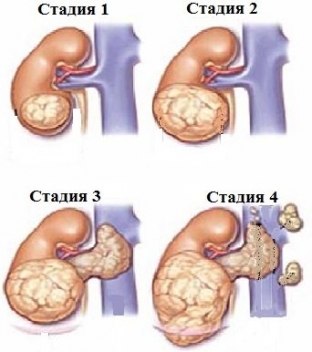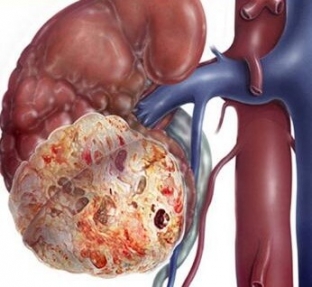Oncological processes have different degrees of malignancy. The most aggressive malignant tumor of the kidney tissue that occurs in children is Wilms tumor. This pathology is detected before the age of 5 years and may be congenital. In half of the cases, the tumor is bilateral. Wilms' tumor is rare in adults. Wilms tumor is manifested by a combination of non-specific symptoms. Find out in our article how the presence of Wilms' tumor manifests itself? What is the prognosis for a neoplasm in children?
Causes of Wilms tumor in children
 The main reason for the development of oncological pathology is a genetic mutation, the causes of which remain unknown. Genetic predisposition and malformations increase the risk of Wilms tumor formation. For example, this occurs when there is a violation of the development of the iris, uneven development of the halves of the body, hypospadias and cryptorchidism.
The main reason for the development of oncological pathology is a genetic mutation, the causes of which remain unknown. Genetic predisposition and malformations increase the risk of Wilms tumor formation. For example, this occurs when there is a violation of the development of the iris, uneven development of the halves of the body, hypospadias and cryptorchidism.
Wilms tumor stages:
- 1 stage – the tumor is within the kidney. The kidney capsule and vessels are not involved, there are no metastases.
- Stage 2 – the neoplasm extends beyond the kidney. The organ capsule and/or vessels are affected. There are no metastases, the formation is mobile. Radical surgery possible.
- Stage 3 – the tumor metastasizes to the abdominal cavity or lymph nodes.
- 4 stage – metastatic cancer of the liver, brain or spinal cord, lungs or bones is detected.
- 5 stage – the tumor is bilateral.
What are the symptoms of Wilms tumor?
The initial stages of Wilms tumor are not accompanied by clinical symptoms. Perhaps the presence of non-specific symptoms – weakness, lethargy, weight loss, loss of appetite, fever.
Large tumors are palpable through the abdominal wall, the abdomen may be asymmetrical, intestinal obstruction may develop. When squeezing the respiratory organs, shortness of breath is noted.
On palpation, a dense, smooth, painless nodule is determined. Pain appears when the tumor compresses neighboring organs with its size, when it grows into the liver, retroperitoneal tissue and diaphragm. How to identify and differentiate the process, read further on estet-portal.com. When germinating in cup – the pelvic system appears blood in the urine, but microhematuria is observed more often than macrohematuria. Most patients with Wilms tumor have elevated blood pressure.
Diagnostic process and treatments for Wilms tumor
Rare syndromes and isolated anomalies serve as an additional indication of Wilms tumor in the initial stages of the study. Instrumental and laboratory diagnostics are carried out, which includes excretory urography, chest x-ray. Abdominal ultrasound is required. To rule out bone metastases, skeletal bone scintigraphy and sternal puncture are performed.
 Wilms tumor treatment is combined and includes radiotherapy, chemotherapy and surgery. A total or partial nephrectomy is performed. For patients under the age of 1 year, the operation is performed without prior chemotherapy. Children older than a year are given a course of chemotherapy for 1-2 months. Complete bilateral nephrectomy is performed for extensive lesions of both kidneys.
Wilms tumor treatment is combined and includes radiotherapy, chemotherapy and surgery. A total or partial nephrectomy is performed. For patients under the age of 1 year, the operation is performed without prior chemotherapy. Children older than a year are given a course of chemotherapy for 1-2 months. Complete bilateral nephrectomy is performed for extensive lesions of both kidneys.
What is the prognosis for Wilms tumor?
After the treatment of Wilms' tumor, patients undergo monthly ultrasound of the abdominal organs. The prognosis for Wilms tumor depends on the histological features and the stage of development of the neoplasm.
Five-year survival rate in the first stage of Wilms' tumor is observed in 80-90% of cases, in the second stage – 70-80%, and the third – 35-50%. In the presence of recurrence, a two-year survival rate is observed in 40% of cases.
An unfavorable course of the pathological process is observed at the age of up to one and a half years and after 5 years. In the treatment of Wilms' tumor, it is important not to interrupt the course of radiation therapy and chemotherapy.







Add a comment